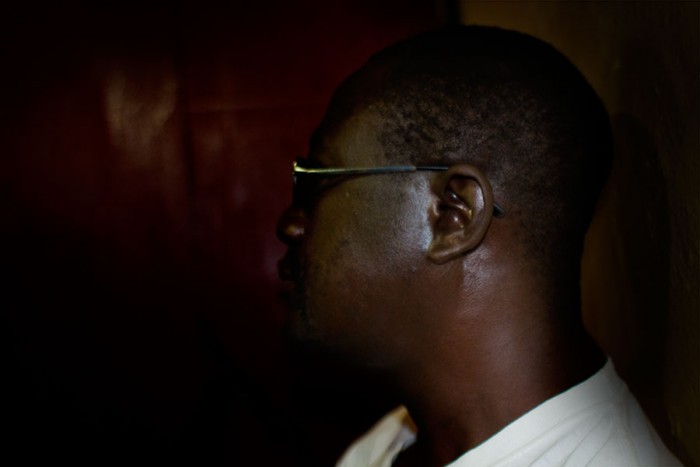June 28th, 2015 by Rachel | Tags: Disability, Health, HIV/AIDS, Peace Corps | No Comments »

This is a visually impaired Cameroonian man who is living with HIV/AIDS.
Many healthcare workers and ordinary people in Cameroon often falsely assume that persons with disability are not sexually active and have immunity to HIV/AIDS. Many healthcare workers also believe that women with disability cannot get pregnant. As healthcare workers also have stigma towards them, persons with disability are often placed last on the list of those who should have the priority to receive care for HIV/AIDS. Parents of children with disability often refuse to acknowledge that their children with disability could be sexually active. There is a fear that if information about sexual health are shared with those with developmental disability, they will become more vulnerable to HIV/AIDS. Some people living with HIV/AIDS believe that if they have sex with a persons with physical or mental disability, they could become HIV/AIDS-free. Women with disability face sexual threats, rape and the issue of convincing men to use condoms. Healthcare centers that provide HIV/AIDS service and counseling are often inaccessible to persons with disability due to physical structures of the buildings.
Because of the false notion that persons with disability are immune to HIV/AIDS, they are often left out of HIV/AIDS education and services including counseling and testing, which they very badly need. Persons with disability are as equally prone to HIV/AIDS as persons without disability. They are also just as sexually active as persons without disability according to a few reports.
They are left out of education also because majority of them are illiterate due to limited education background. Only 2% of all persons with disability in Cameroon have received formal education. Moreover, the presentations at HIV/AIDS workshops are usually inaccessible to deaf and hard of hearing people and visually impaired. There are often no interpreters, transcripts, or any kind of visual aids, the accommodations that are needed to be part of presentations in order to allow deaf and hard of hearing people to be included in presentations. It’s important to note that deaf and hard of people can also be left out of listening to one of the most used mediums for education, radio, on HIV/AIDS. Verbal descriptions of visual aids and audio recordings or braille version of handouts, the accommodations needed for visually impaired people, are often non-existence. Then those with mobility disability struggle to attend the workshops because they need transportation which they often cannot get due to taxi and moto bike drivers unwilling to transport persons with disability because of the time they take to get in and out of the vehicle and the need to have an assistance. We also need to keep in mind that 95% of persons with disability are the poorest of the poor and therefore, many may not have the financial means to attend the workshop.
So, when persons with disability are left out of HIV/AIDS education, they are in greater risk of getting HIV/AIDS. When they are not educated, they have no knowledge about how the disease is transmitted, their own sexual reproductive health, having safe sex, and service and treatment options. When they are turned away from services, in particularly testing, the healthcare workers are potentially increasing the rate of HIV/AIDS as persons with disability who are unknowingly living with HIV/AIDS could transmit the disease to others. Moreover, HIV/AIDS create a tremendous negative impact on the financial status of persons with disability. Because they already face the difficulty of finding and holding a job due to their disability, living with HIV/AIDS can cause them to face greater challenges in having the ability to work due to not feeling well when not having an appropriate treatment or facing double stigma.
A lot of work will need to be done to educate persons with disability about HIV/AIDS and also healthcare workers in Cameroon about giving the persons with disability the most deserving attention in HIV/AIDS issue. I will write a follow-up post on what can be done to solve the issue of persons with disability being left out of HIV/AIDS services.
